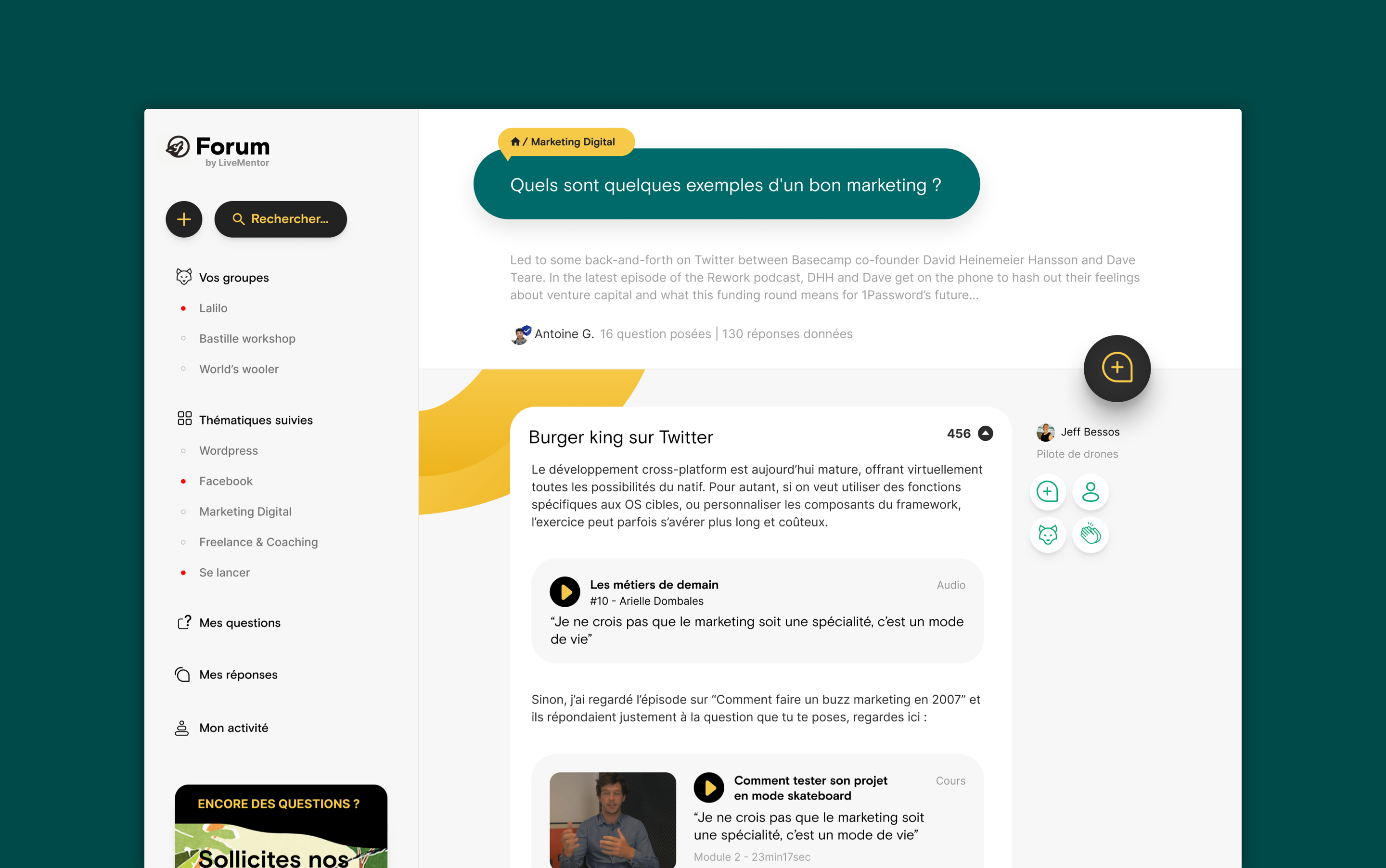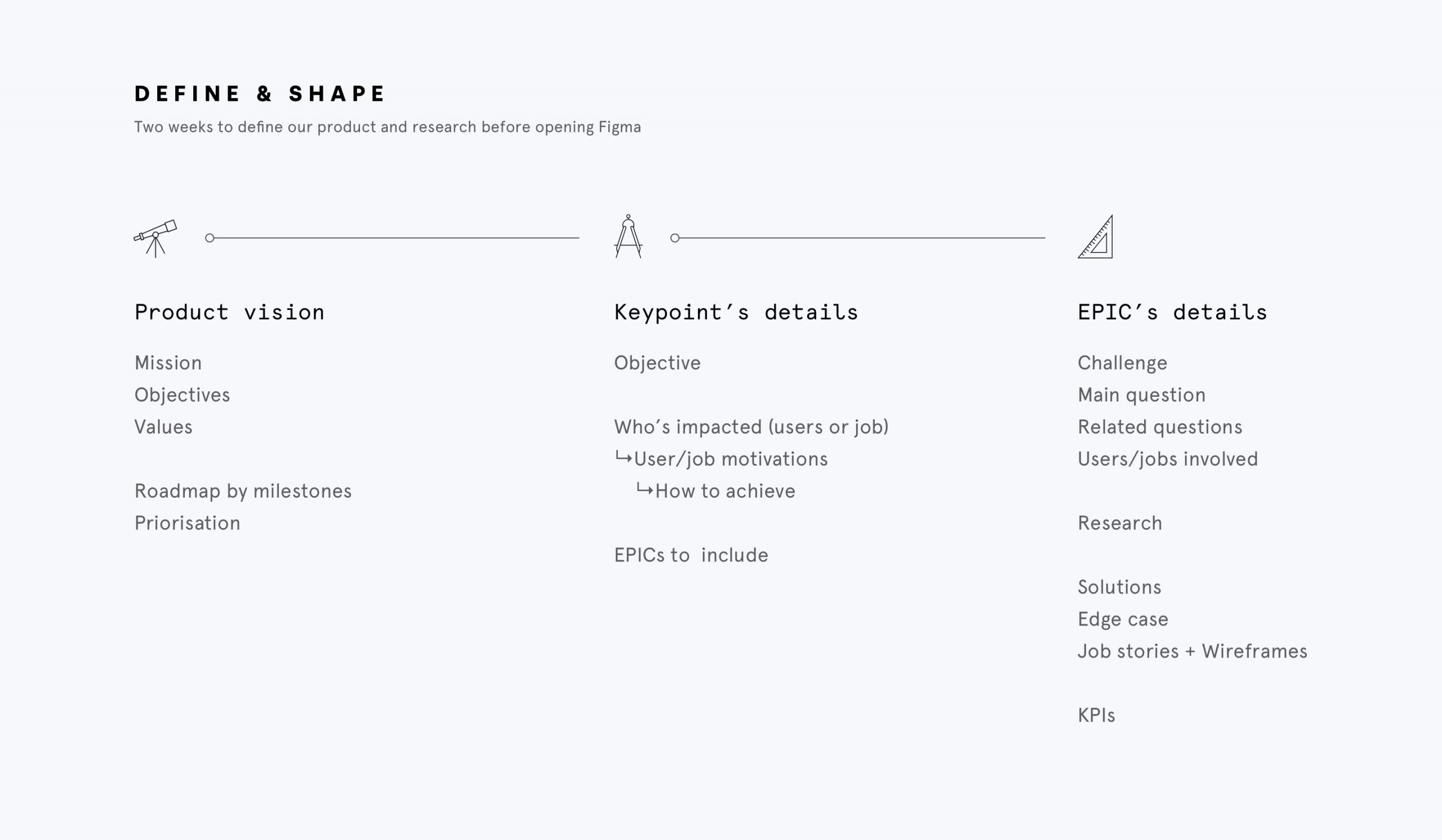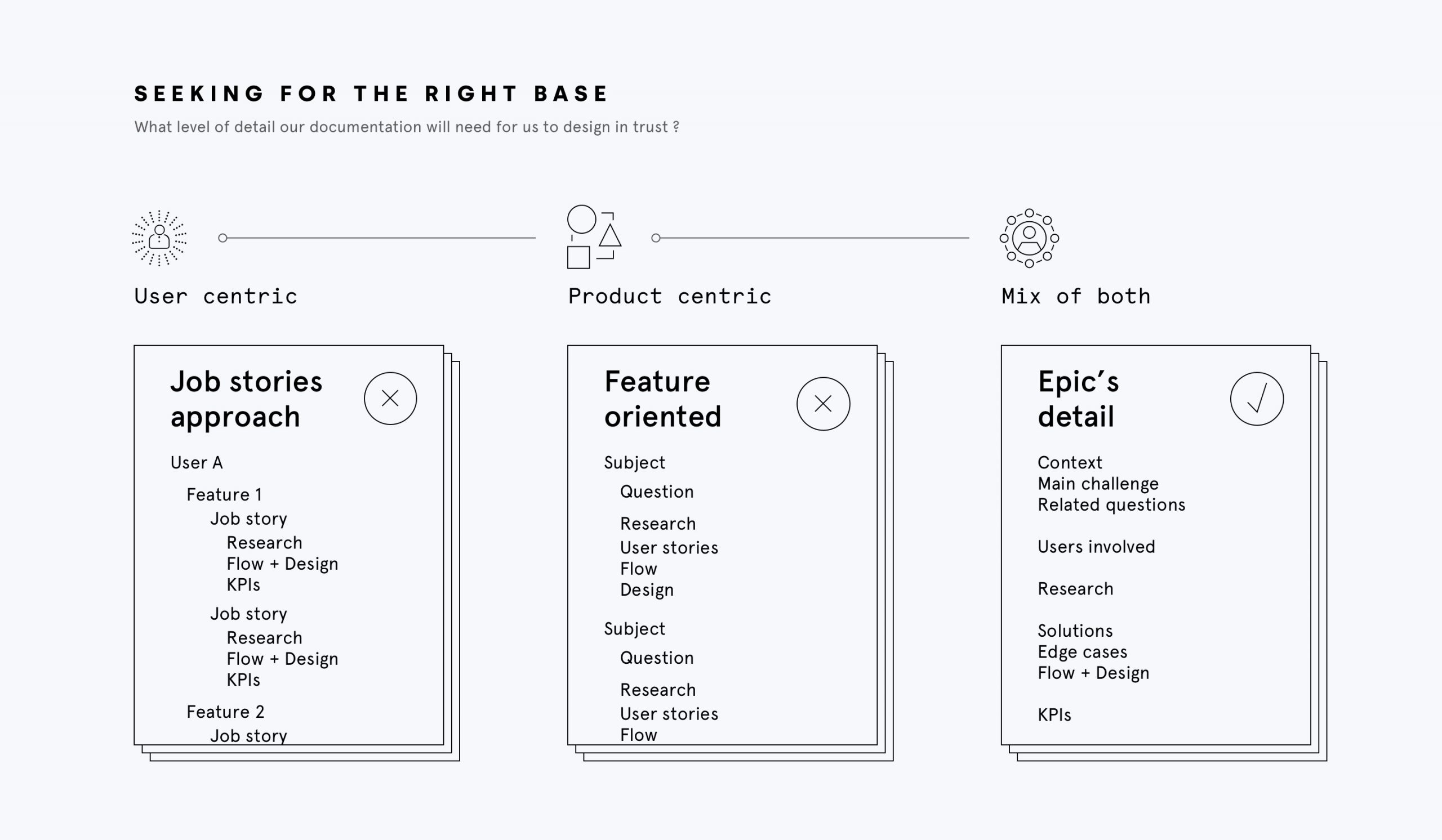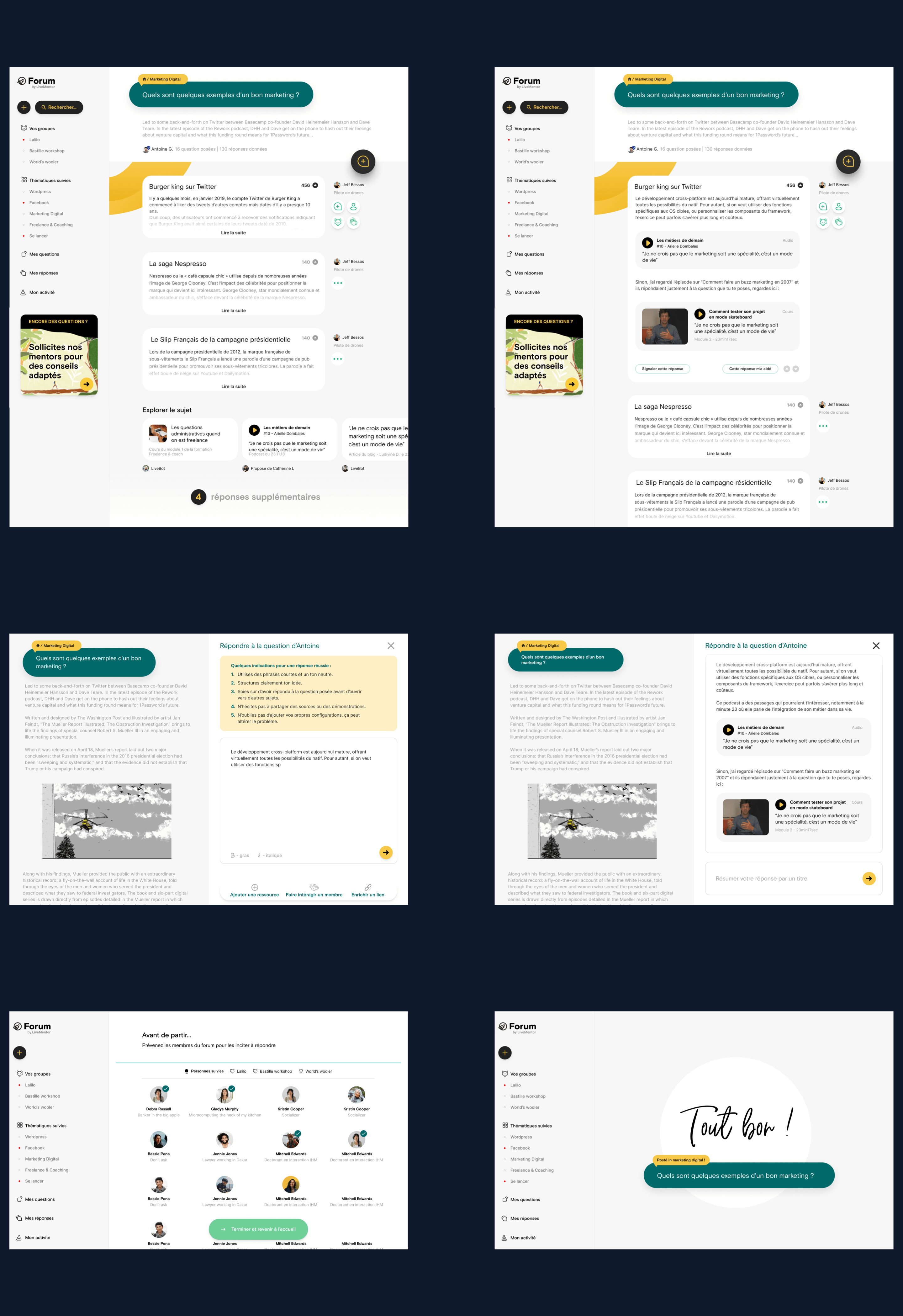LIVEMENTOR
How can we transform an active Facebook group into a powerful community of mutual aid between entrepreneurs ?
product strategy & design - 2018

THE CONTEXT
At the end of 2019, Livementor, an edtech company helping entrepreneurs on shaping their ideas and achieving their goals, wanted to create a place where its users could interact together to find solutions, answers, and more. Before this, the Facebook group was used, tweaked, refined, but finally had showed its limits. Time to create our own Q&A tool for entrepreneurs !
WHAT WE'VE DONE
THE PROPOSAL
1. Learning from our past experience and from the Facebook group
- We need full time animators : the best communities are the ones with incentives for the more motivated to continue to share !
- Be flexible : The best community platform are the ones where you can do so much more than the basic Q&A
- Never hesitate to involve our community : Livementor’s community is awesome, they love to interact, don’t hesitate if they can help ! Just don’t forget to reward whatever the way to.

2. Definition of global mission
Livementor’s global vision is to help entrepreneurs to open up to initiate. This Q&A place, to be truly ours, needed to be in line with this. So we took an hour to dabble with words and come up with this mission, that we thought would very much open up new field of play : give entrepreneurs a place to confront with others.
3. Selecting our must have + priorisation
To do that, we thought that we would need a base to ensure that the content was the best quality, so launching a first version with only the possibility to question and answer seem to make sense.
Later, we would build all the social features, and evolving smoothly to go from nothing to an almost autonomous platform.

4. Dividing the release to set smaller objectives, associating features
For the first version, four themes emerged :
Ask / Answers / Moderation / Evaluating
For each, we started by setting hypothesis (using job stories). After mapping our needs we followed by digging through to understand better how it was impacting others, what they’ve learned, what they’ve choose to do to tackle the problem, to propose solutions that meet our needs.

The trickiest part
As it was a new product and we had little time to show results, the big question for our team of two revolve around how long we could spend in research, rather than diving right away in the design of flows to have something live and gain feedbacks as quick as possible ? It was a new product where we had lots of believes, but a lack of experiences, so should we balance this with reseach ?
What helped us was that we already chose to prioritized what we thought were the laying ground of the product : what’s a good answer and a good question. But what are those ? Would it arm our product to go live without understanding it ?
At first, we thought that by stating users goals, we would narrow where we should focus. So we used job stories. I used those many time, and it’s a great way to build a feature with context and needs. But it was too user centric to start a product.
Then we tried the opposite, starting with our features as EPICs to have a flow by flow approach. But we lacked context.
In the end, we used a method close to Basecamp’s Shape up approach, where we divided the work by features using users’ needs and constraints to design solutions. Research was made differently depending on a preliminary priorisation, reducing the amount of work to a week.
5. Wireframes and design
As the livementor UI was built bricks by bricks at different times, we wanted to create something that could serve as a base to be declined eveywhere.
